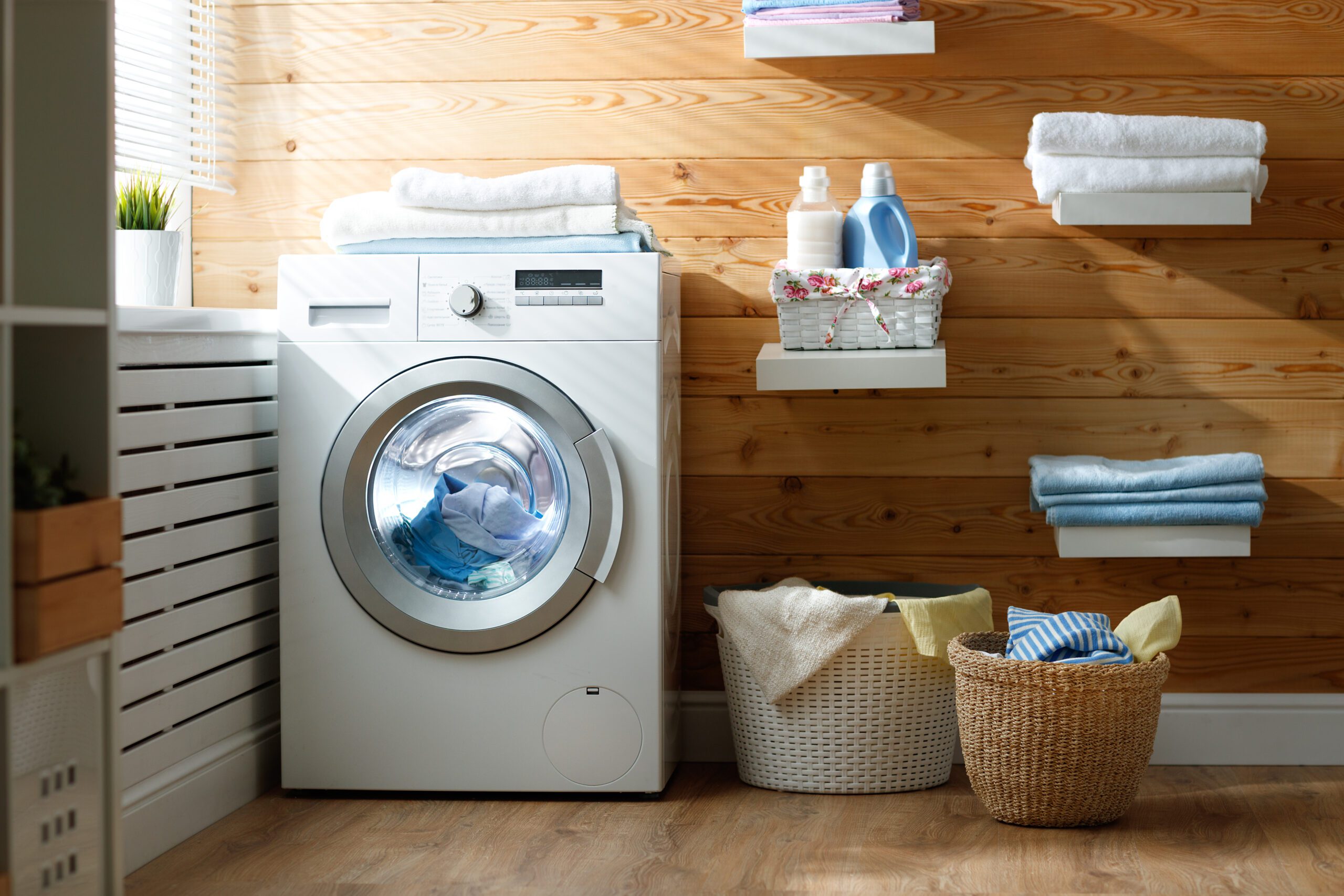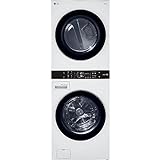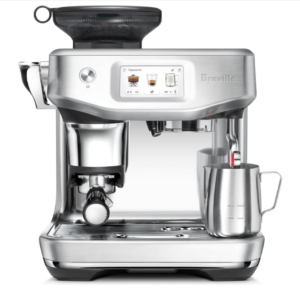We have been homeowners for over 35 years, owned 9 different homes as well as a vacation home. I even started this blog as I “thought” I had extensive experience with all types of appliances, home renovations, repair and consider myself an accomplished DIY’er. To be honest, I’ve never heard of a ventless clothes dryer.
This topic came about as we were looking for a new washer and dryer combo for our shore house. The space where our existing washer and dryer are located is somewhat limited primarily due to the depth of the space. Most of the units we were interested in were deeper than the existing side by side we have, and if we couldn’t get it closer to the wall, it would protrude proud of the wall a few inches into the hallway. The main obstacle to getting the deeper units closer to the wall was the 4” flexible vent duct on the back of the dryer that you need to be careful not to crush.
As I started measuring and researching new units, I came across an option on the Stacked LG Washtower that said there was a “ventless” option. We followed up with a trip to our local appliance store, had an in-depth discussion with the salesperson, and I did some research on the pros and cons of Ventless dryers which I’ve put in this article.
What is a Ventless Clothes dryer?
Basically, a ventless clothes dryer is a unit that doesn’t have to be vented to the outside. Therefore, there is no need to connect that pesky flexible vent on the back that comes disconnected if you pull the dryer out to clean or get something that fell behind it.
Types of Ventless Dryers:
It’s important to understand some basics of how they work, and what types exist. There are two types, a “Condenser” type and a “Heat Pump” type.
Condenser Type:
In a condenser type ventless dryer, air is heated by a condenser before it enters the drum, but instead of being vented to the outside, it’s re-directed back into the condenser, cooled down and then reheated again. The moisture that’s collected from the damp clothes during the condenser cycle is directed into a container that requires manual emptying. With most models, you can opt to connect a drain tube to allow for continuous removal of the water if an appropriate drain is accessible. Condenser dryers are more energy-efficient than standard vented models, since the same air is being reused. They’re also easier on your clothes since a ventless dryer runs much cooler than vented models, and your clothes won’t become overdried. This reduces the stress on the fabric of your clothing which will extend the life of your favorite outfits.
Heat Pump Type:
This style of dryer operates with an electric heat pump. Unlike the condenser type, a heat pump dryer keeps the air warm continuously, rather than cooling it down after it’s used. It does, however, operate at lower temperatures than a condenser dryer, making it even more energy-efficient and gentler on clothes than condenser types. However, there are 2 notable drawbacks compared to Condenser dryers. The have noticeably longer dry times and tend to be noisy.
Pros and Cons of a Ventless Clothes Dryer
Pros:
- Space Efficiency: Ventless dryers are often more compact, making them ideal for small apartments or homes where space is limited.
- Easy Installation: Since they don’t require a vent to the outside, ventless dryers are easier to install and can be placed in more locations within a home.
- Energy Efficiency: Many ventless dryers, particularly condenser and heat pump models, are more energy-efficient than traditional vented dryers.
- Less Maintenance: Without a vent, there’s no need to clean out lint from the ductwork, reducing maintenance requirements.
- Gentler on Clothes: Ventless dryers can be gentler on fabrics, as they often use lower temperatures and more gentle tumbling actions.
Cons:
- Longer Drying Times: Ventless dryers typically take longer to dry clothes than vented models.
- Higher Initial Cost: Ventless dryers, especially heat pump models, can be more expensive to purchase than vented dryers.
- Moisture and Heat Output: Some ventless dryers, particularly condenser models, can release heat and humidity into the room, which can be an issue in small or poorly ventilated spaces.
- Capacity Limitations: Ventless dryers often have smaller capacities compared to traditional vented dryers, which might be inconvenient for large families or those with greater laundry needs.
- Maintenance of Water Reservoir: If the dryer is a condenser model, it may have a water reservoir that needs to be emptied regularly.
Safety Consideration:
There is one safety advantage of the ventless option that I think is worth mentioning. If the ductwork of a vented system is not routinely cleaned and allowed to build up as seen below, the potential for a fire is introduced if the buildup continues to the point where airflow is significantly restricted.
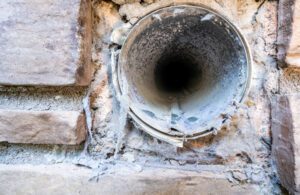
Is a Ventless Clothes Dryer Better Than Vented?
Ventless dryers are certainly easier to install, they are more efficient, and they are gentler on clothes. The also offer much more flexibility of location. However, they also tend to have a significantly higher upfront cost, they take longer than to get everything dry and in the case of the Heat Pump type, they can be noisy.
Our research indicates that less than 2% of homes in the United States have ventless dryers, while they are much more popular in Europe. This makes sense as typical European households tend to be smaller, so space constraints are more significant making flexibility of location more important.
So, what the right choice is for you is based on your situation considering the pros and cons of noted above. In most cases, a vented dryer will be the right choice here in the US, but if location flexibility is important and the outside vent connection is not located where you want your dryer, then a ventless unit may be a viable option.
Best Ventless Clothes Dryers:
The selection for ventless clothes dryers is limited, however, we were able to do some research and found these models to be the best out there. You’ll notice that several of these ventless units are also combo washer and dryer units. There are pros and cons to the all in one units as well, I’ve listed them below the table.
Rotate Your Mobile Device for a Complete View of the Table
| OVERALL BEST | RUNNER UP | BEST FOR LARGE CAPACITY | IDEAL FOR ADVANCED FEATURES |
|---|---|---|---|
| Midea MLE25H7BWW | Equator Compact 110V | SMETA All-In-One | Techomey 24″ |
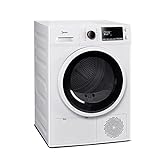 |
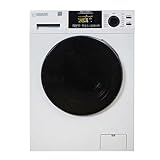 |
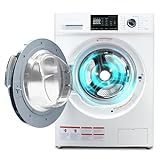 |
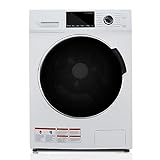 |
| $801.82* | $999.00* | $1,399.00* | $1,299.99* |
| Check Price on Amazon | Check Price on Amazon | Check Price on Amazon | Check Price on Amazon |
*Price at the time of this review
All-in-one washer/dryer units, which combine both washing and drying functions into a single appliance, offer several advantages and disadvantages. Here’s a breakdown of their pros and cons:
Pros of All-in-One Washer/Dryer Units
- Space-Saving: These units are ideal for small apartments, RVs, or homes with limited space, as they take up less room than separate washers and dryers.
- Convenience: All-in-one units provide the convenience of washing and drying clothes in the same machine without the need to transfer laundry between appliances.
- Energy Efficiency: Many all-in-one models are designed to be energy-efficient, potentially reducing utility bills.
- Installation Flexibility: These units often require fewer installation requirements (like venting for dryers) and can be a good choice for locations where traditional dryers can’t be easily installed.
- Less Manual Labor: They eliminate the need to move wet clothes from a washer to a dryer, which can be beneficial for those with mobility issues.
Cons of All-in-One Washer/Dryer Units
- Longer Drying Times: All-in-one units typically take longer to dry clothes compared to separate dryers, which can be inconvenient for those with larger laundry loads or limited time.
- Smaller Load Capacity: These units often have smaller capacities than standalone washers and dryers, which means more frequent laundry cycles for larger households.
- Performance Issues: Some users report that all-in-one units may not dry as effectively as separate dryers, potentially leaving clothes slightly damp.
- Cost: All-in-one washer/dryers can be more expensive upfront compared to purchasing a basic washer and dryer separately.
- Limited Availability: There are fewer models and options available on the market, which can limit choices in terms of features and price points.
- Wear and Tear: Since the same drum is used for both washing and drying, these units might experience more wear and tear over time, potentially leading to more maintenance issues.
Our Selection:
Although we did alot of research on ventless dryers, we ultimately went with a vented dryer for this project. For the space we had, we opted for the LG Washtower shown below. While I mentioned the reason we started looking for a ventless system to allow us to push the dryer closer to the wall, we found that this unit has knockout to actually vent it through the side vs the back. By venting through the side, we were able to push the stacked washer and dryer as close to the wall as we would have with a ventless system.
Single Unit Front Load LG WashTower™ with Center Control™ 4.5 cu. ft. Washer and 7.4 cu. ft. Electric Dryer

